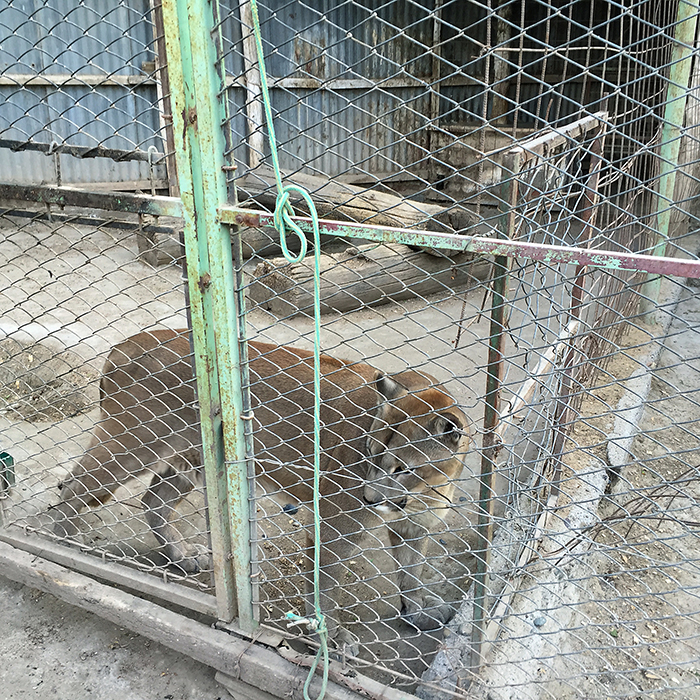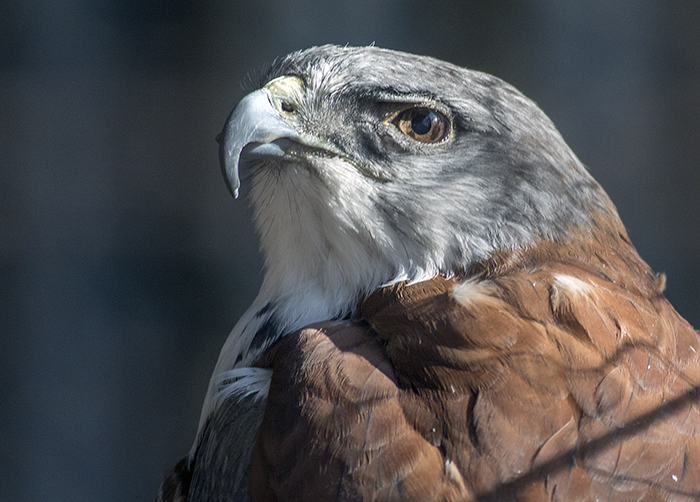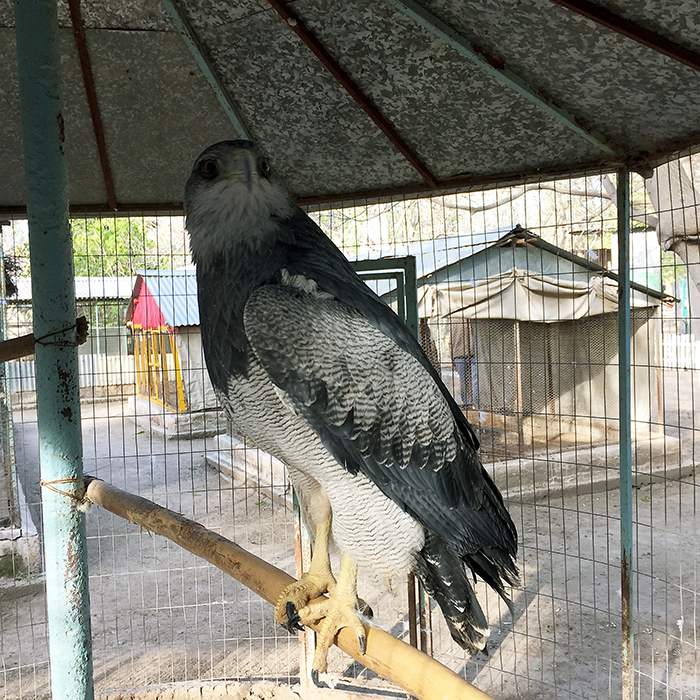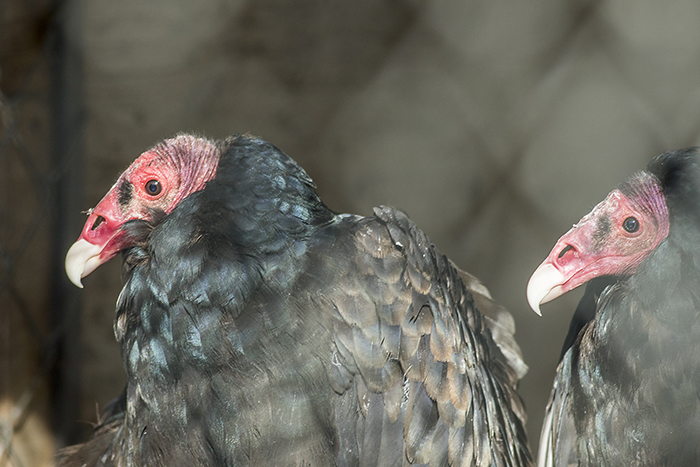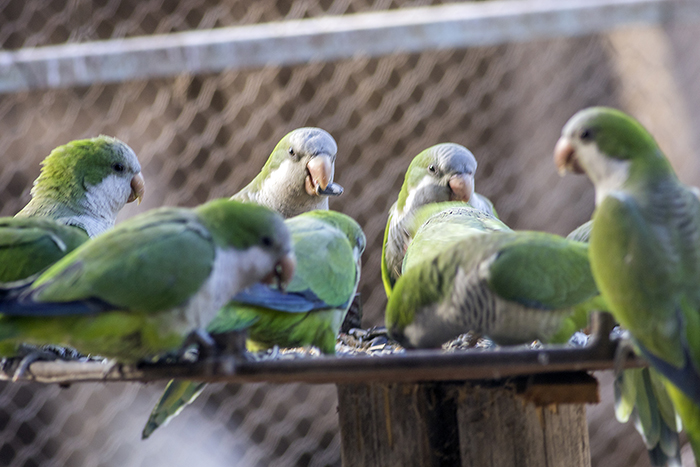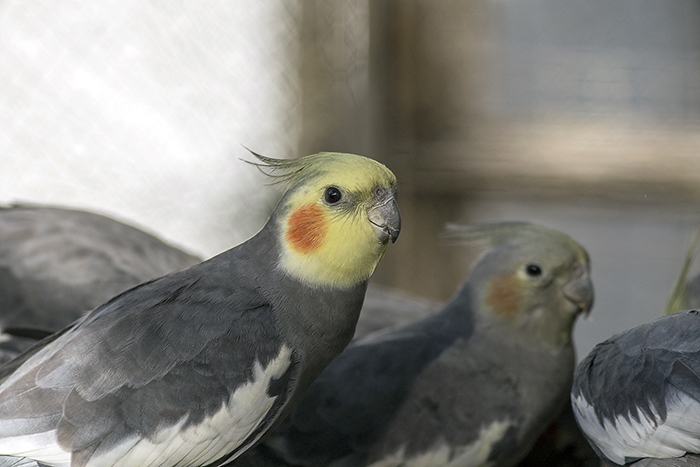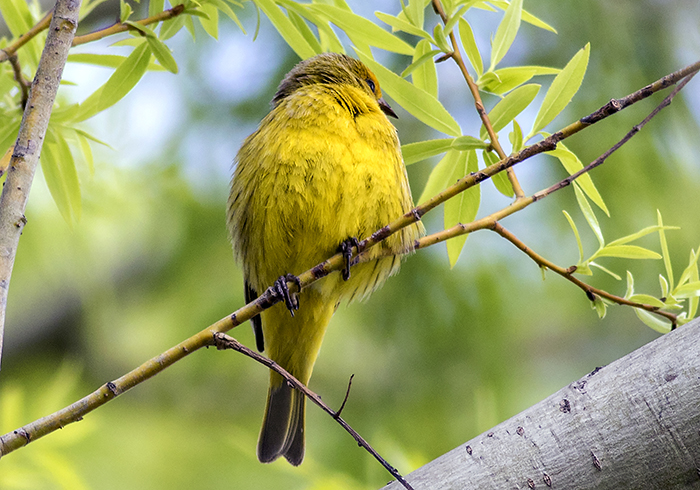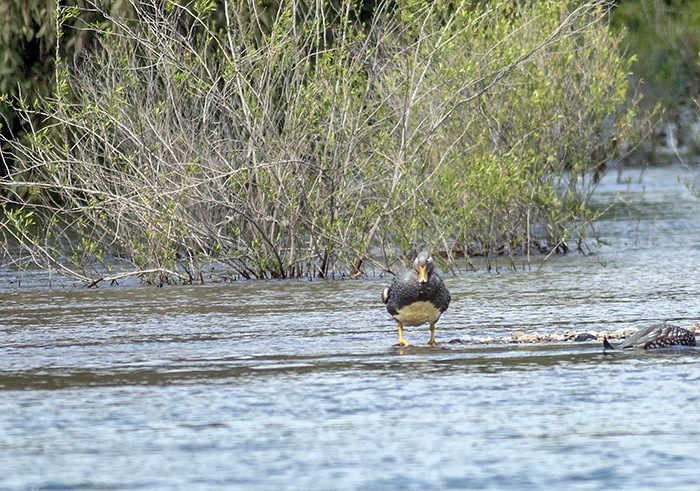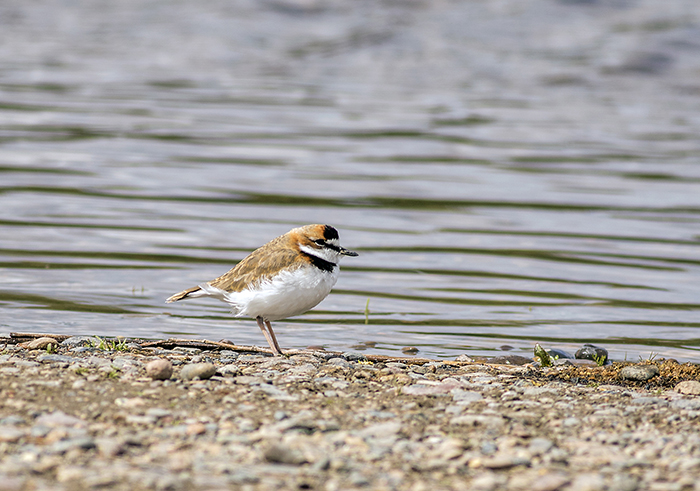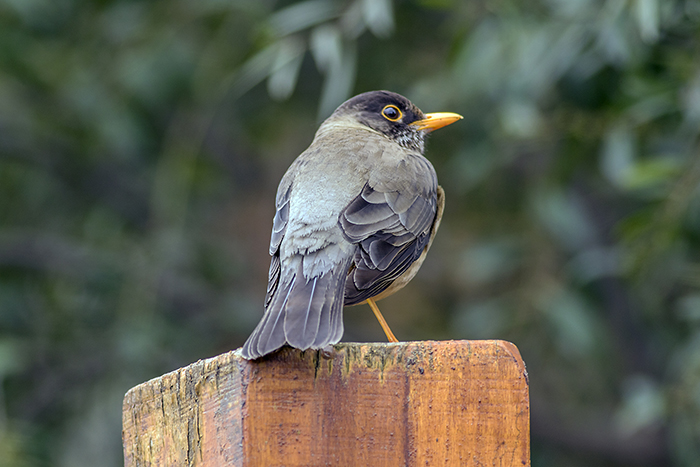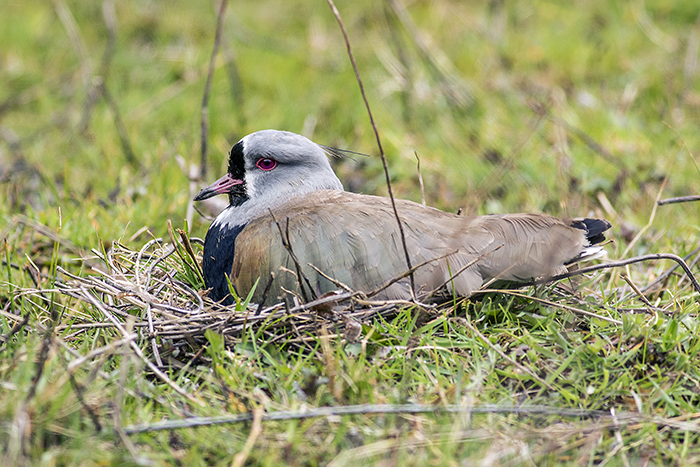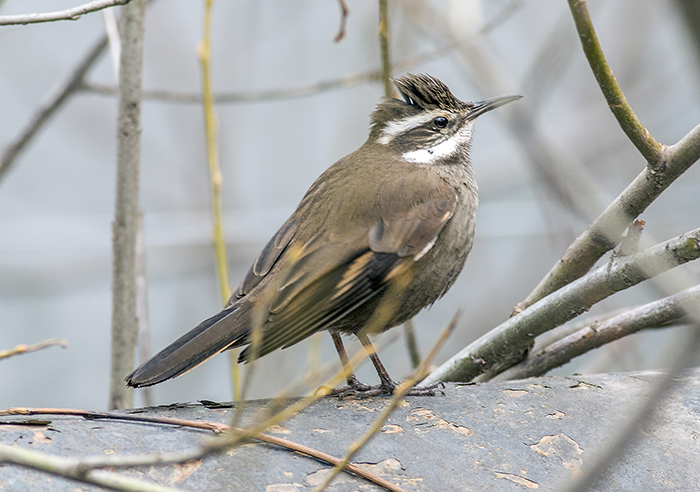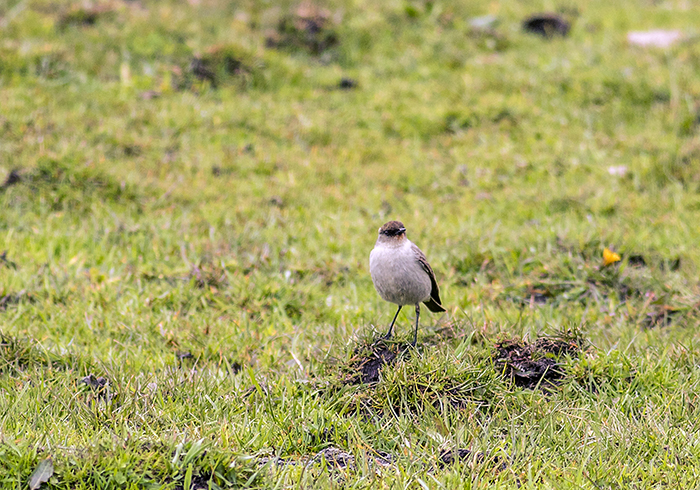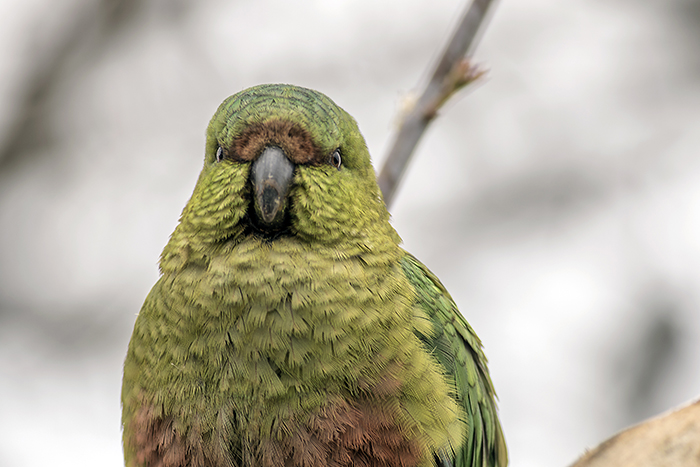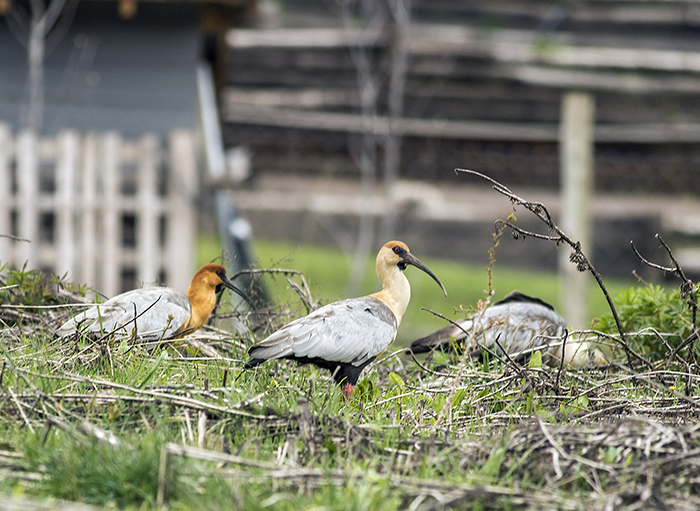On a whim I drove up through Junín de los Andes to Aluminé (passing through Pilolíl) and, after a side trip over to Lake Rucachoroi drove on to Villa Pehuenia and from there to Zapala, passing through Laguna Blanca on the way home to San Martín de los Andes.
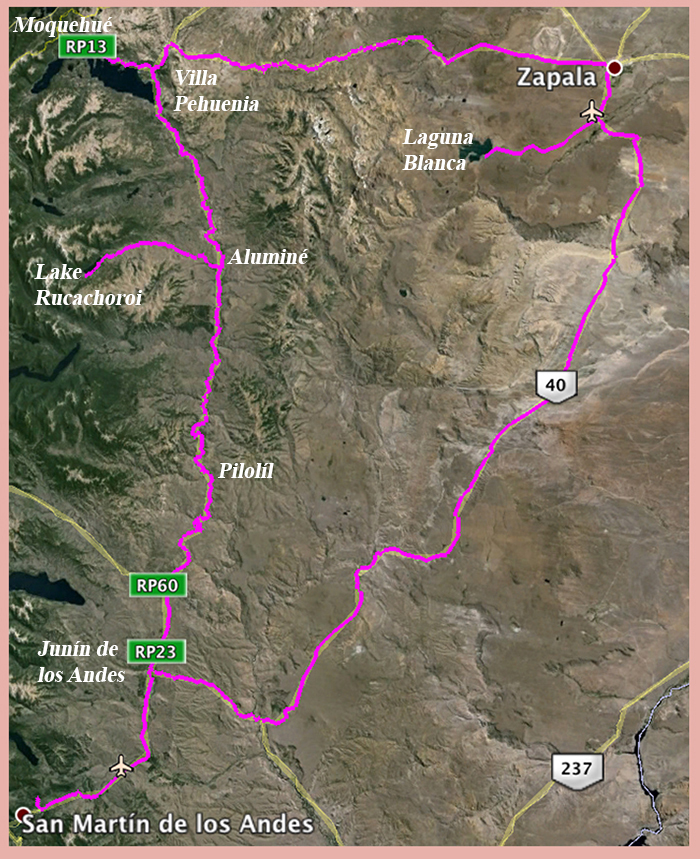
Route of circuit San Martín – Junín – Aluminé – La Pehuenia – Zapala – San Martín
I experienced all kinds of weather, from heavy snow in Villa Pehuenia, heavy rain in Moquehué to scorching sun at Laguna Blanca.I was away three nights and I took my camera, although birding was not my primary aim on this trip.
Leaving home, I saw the usual suspects: bandurrias (Black-faced Ibis), chimangos (Chimango Caracara), jotes (cabeza negra) (black[headed] vultures), chingolos (Rufous-collared Sparrow), etc. I didn’t really pay too much attention at this stage but I did snap a couple of chimangos and a zorzal patagónico (Austral Thrush).
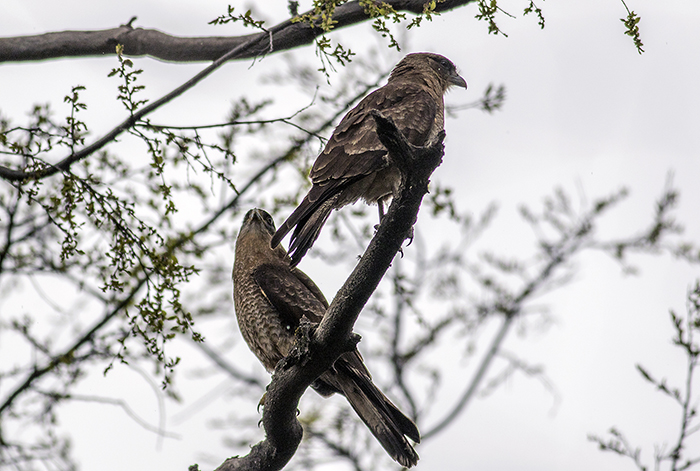
A couple of chimangos in the trees, Junín de los Andes
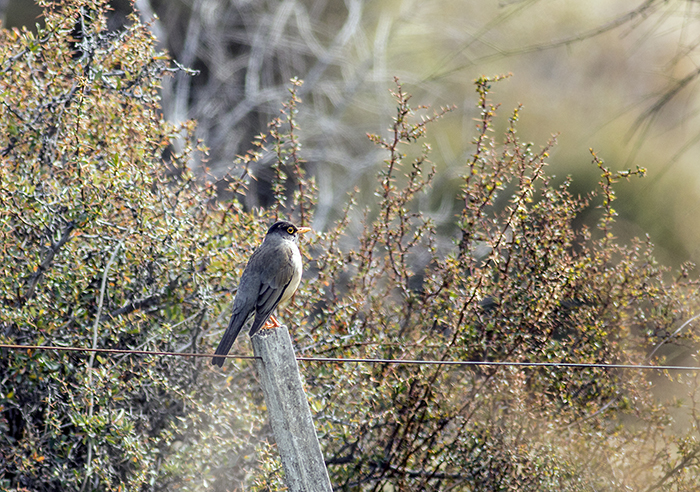
Zorzal Patagónico on a post, Junín de los Andes
A couple of kilometres north of Junín I took the road to Lake Tromen and the Chilean frontier, branching off towards Aluminé as I crossed the Malleo river [thinking how nice a few hours fishing would be, but it was still a few weeks until the season opened]. Half an hour or so along the road, which winds through the Aluminé valley, I took a sharp turn to the left up a steep and twisty track, not for the faint-hearted, up to Pilolíl, a neolithic meeting point with ancient wall paintings.
I had been here before with my friend Scarlet, where we had seen condors at very close quarters, curious about us and our picnic lunch. We had also (briefly) seen a peregrine and made a note of its nest so I went off in search. I never found the nest with certainty; one dark crack in the rock face can look like any other. But I did find the peregrine [or perhaps a relative of his]! Not a great picture, but he was very high!
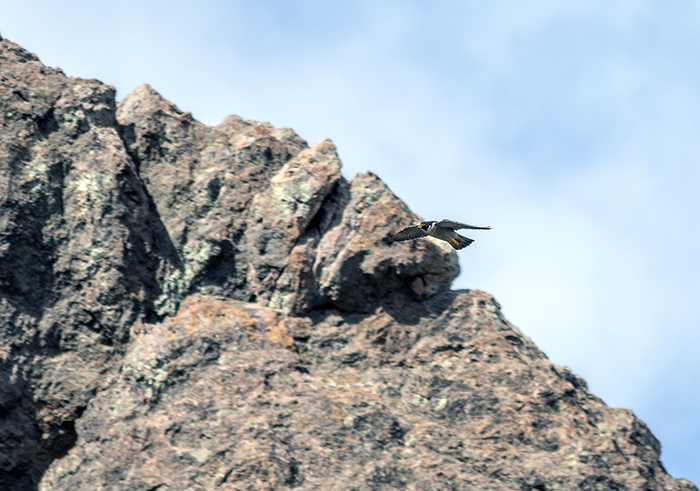
Peregrine falcon at Pilolil, with the rocky crag where he was nesting in the background.
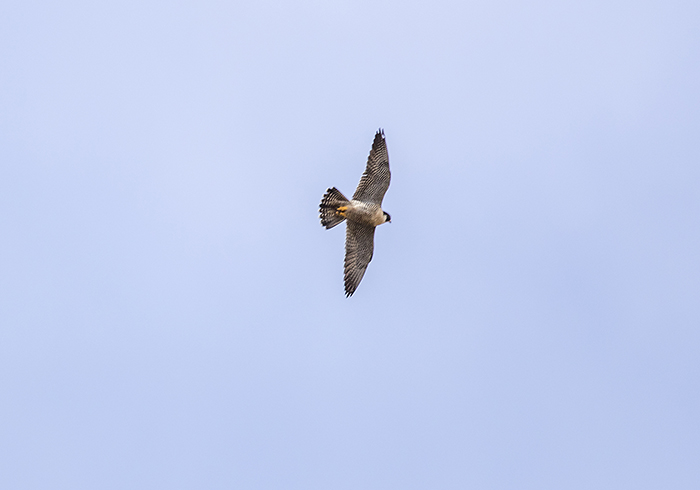
The same peregrine falcon, this time soaring high above Pilolil.
After recovering from the vertigo that the ascent to Pilolíl always gives me I drove on to Aluminé where I had a late lunch at La Posta del Rey. I have been there several times and each time ordered the house speciality: today was no exception. Tasty pasta washed down with an earthy red, a leisurely coffee and I was ready to continue on my way.

Lunch at La Posta del Rey: five kinds of home made pasta with a wild mushroom sauce.
From Aluminé I made a second side trip, this time to Rucachoroi. There are lagoons along this road and you never quite know just what might be around. Not much this time, as it happened: plenty of geese (mainly ashy-headed geese), Andean Flamingo and Coots of various kinds but no exotics. Here are a couple of photos taken along the road to Rucachoroi.
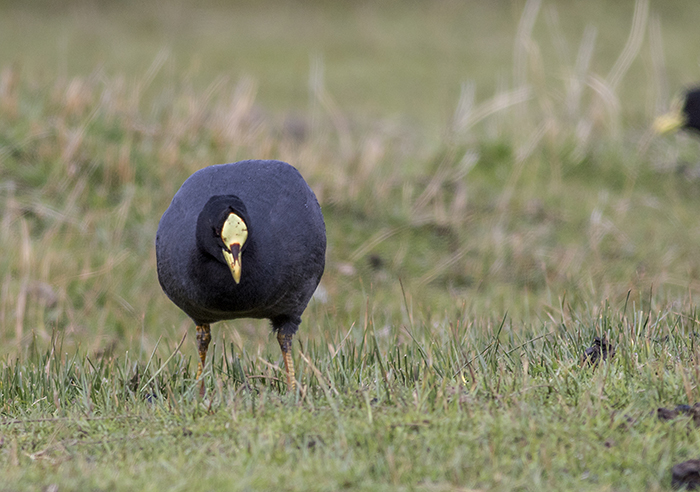
The gallareta ligas rojas (Red-gartered Coot), Fulica armillata.
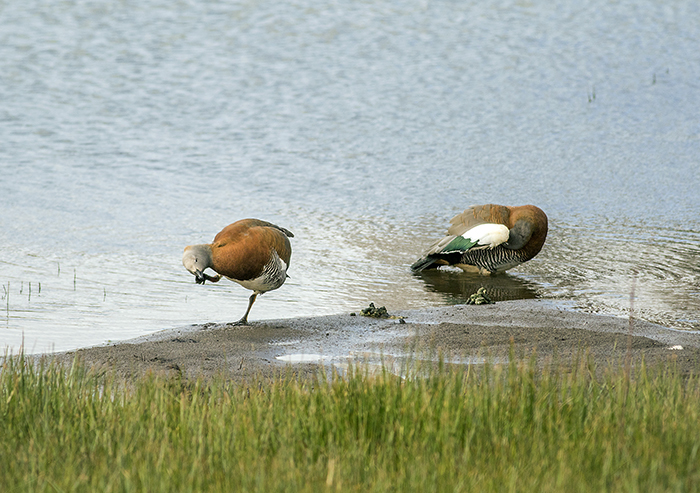
A pair of cauquen real (Ashy-headed Goose), Chloephaga poliocephala, one performing a delicate balancing act.
And of course, where there is water, you expect to find the the remolinera común (Bar-winged or Buff-winged Cinclodes). Here’s one I saw at the lake in Rucachoroi.
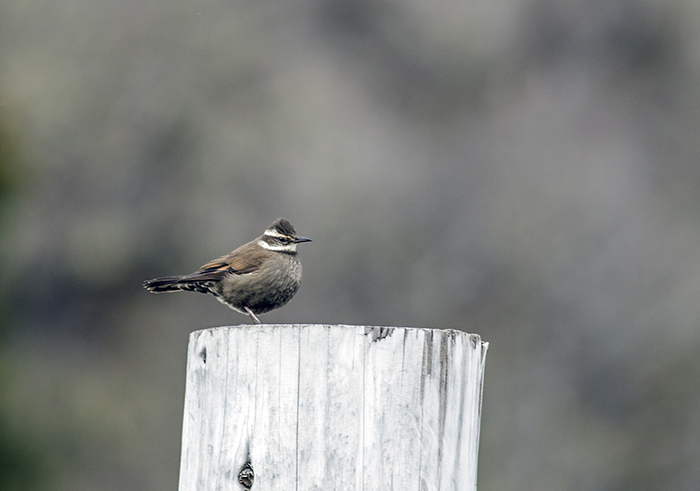
Remolinera comun (Bar-winged or Buff-winged Cinclodes), Cinclodes fuscus.
Villa Pehuenia and the surrounding area were lovely; tourist country and it’s not hard to see why. It snowed hard most of the time I was there, but there was a large bird table which was well attended by comesebos (Sierra Finches), chimangos (Chimango Caracara), tordos renegridos (Shiny Cowbirds), tordos patagónicos (Austral Blackbirds), and many others, including the odd gull.
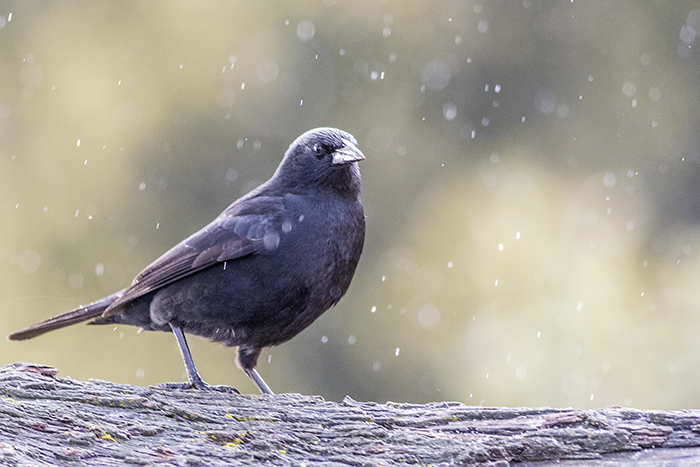
Tordo renegrido (Shiny Cowbird), Molothrus bonariensis.
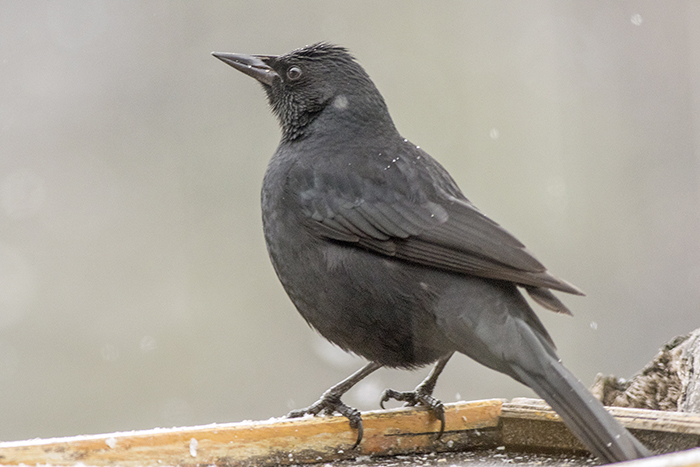
Tordo patagonico (Austral Blackbird), Curaeus curaeus.
Whilst at Villa Pehuenia I took a side trip to Moquehue, a small lakeside town with an airstrip in the middle of the town (go figure). Here I was entertained by the antics of three llamas who grazed in the main street and by a pretty diucón (Fire-eyed Diucon) who seemed to follow me around, perhaps hoping for scraps. It’s easy to see how the diucón got its English name.
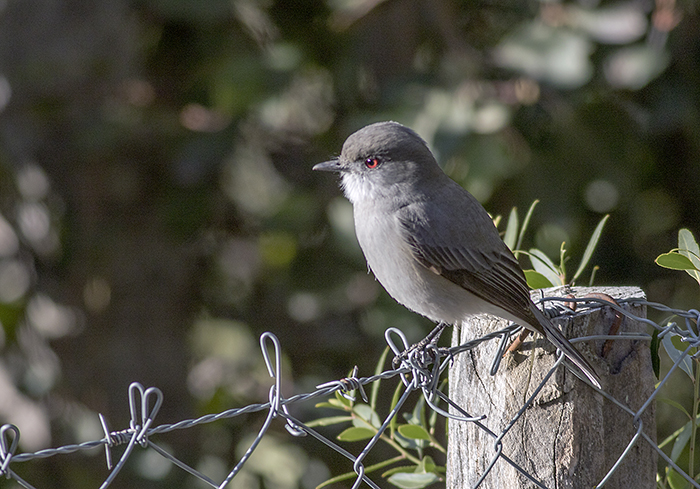
Diucón (Fire-eyed Diucon), Xolmis pyrope.
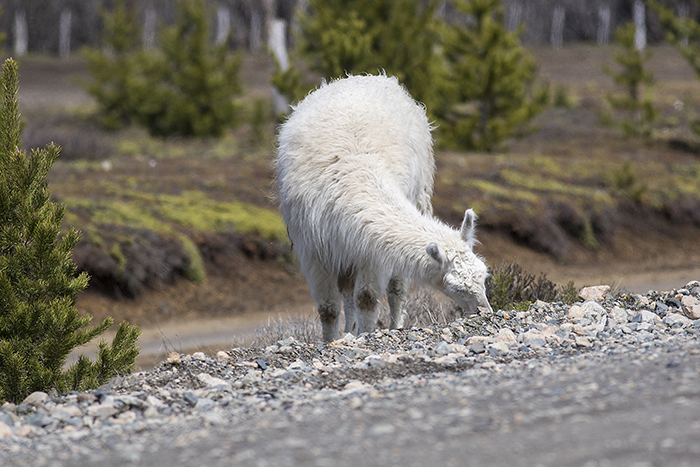
One of three llamas I saw grazing on the roadside at Moquehué.
In Moquehué I also saw a few patos de anteojos aka patos alas bronceadas (Spectacled or Bronze-winged Duck). These are more usually seen on fast-running currents, but apparently can also be seen on quieter water
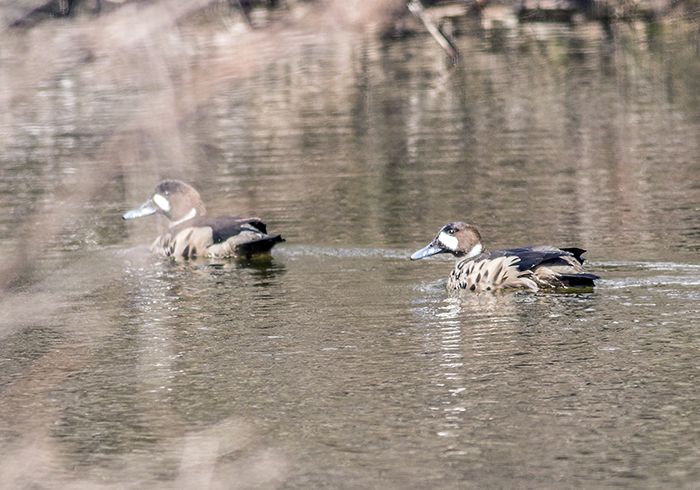
Pato de anteojos (Spectacled aka Bronze-winged Duck,) Specuzanas specularis.
I had an early breakfast on the third day and was bemused as a large gull took over the bird table, scattering all other occupants, including the chimangos. Probably a gaviota cocinera (Kelp Gull) – but I didn’t have a guide handy at the time and the photo doesn’t really help me to see if the underbill has a red spot or not. But I’m not sure what else he could be in this part of the world!
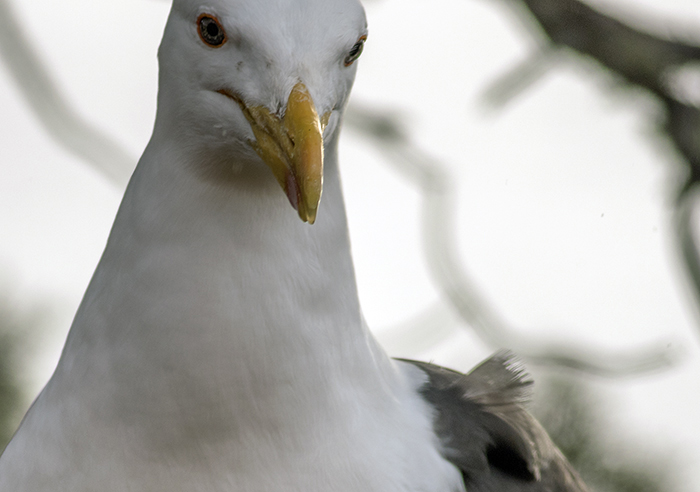
My breakfast companion
And then I got into my car and drove to Zapala, with the aim of visiting nearby Laguna Blanca. But that’s another post.
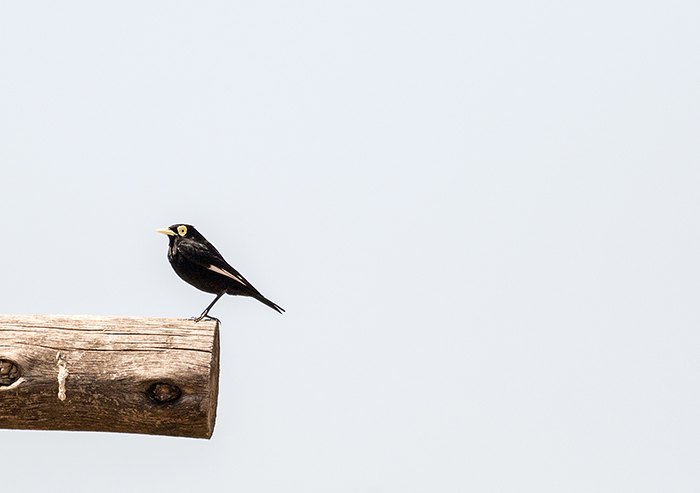
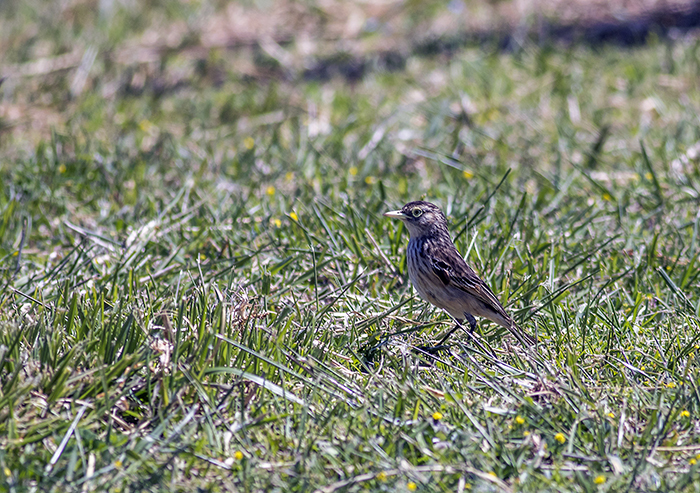
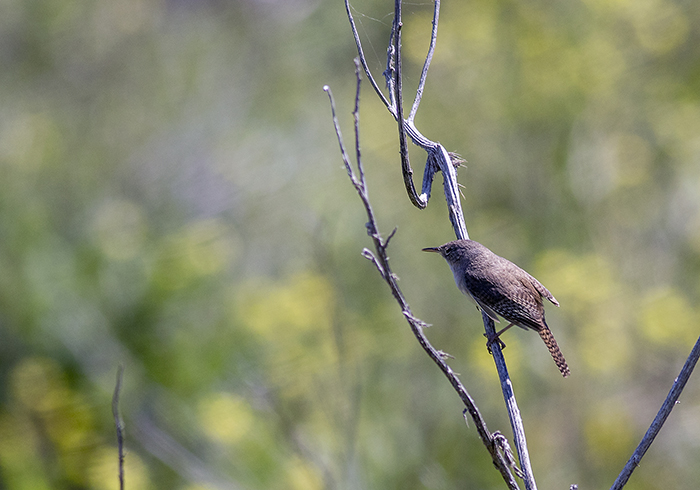
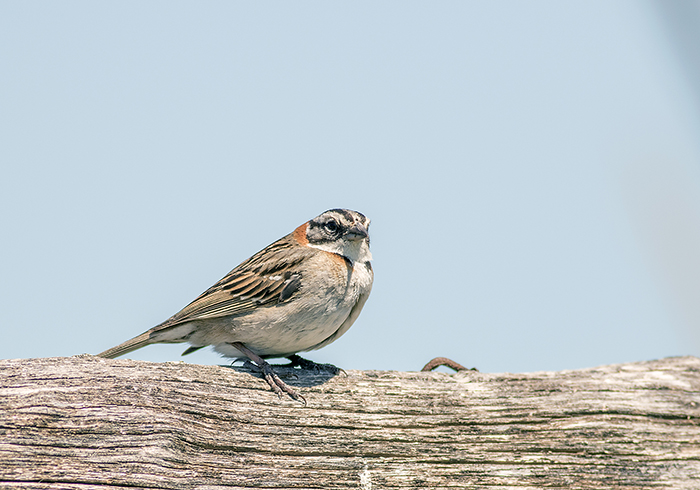
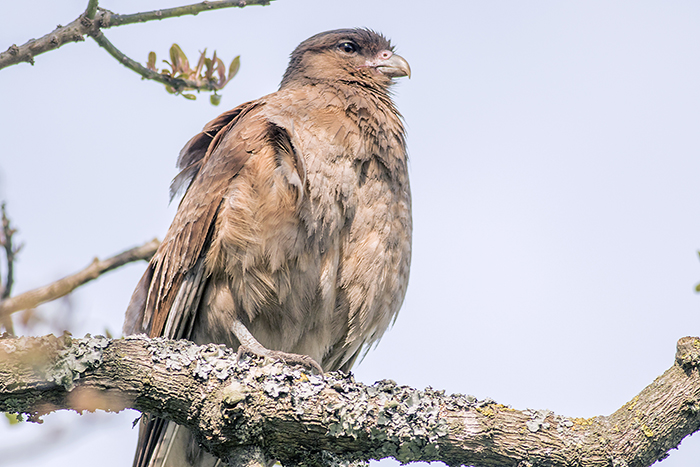
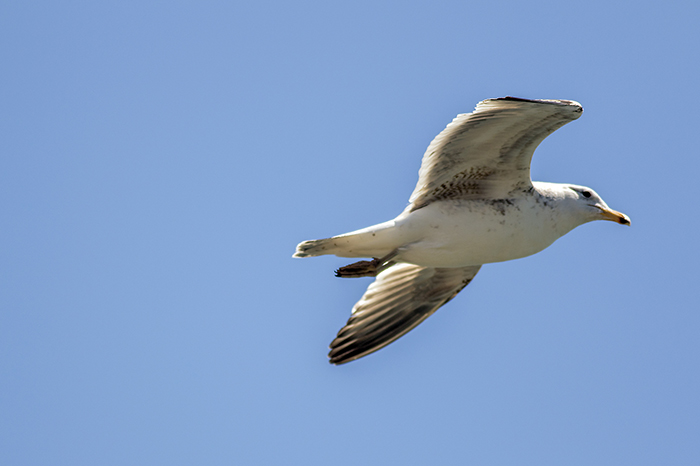
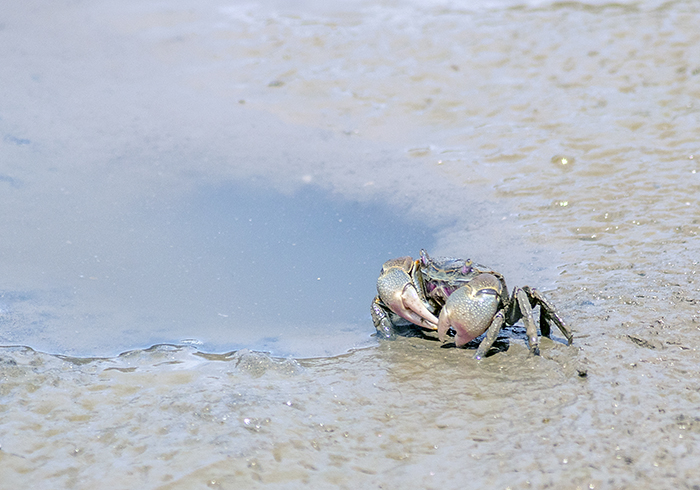
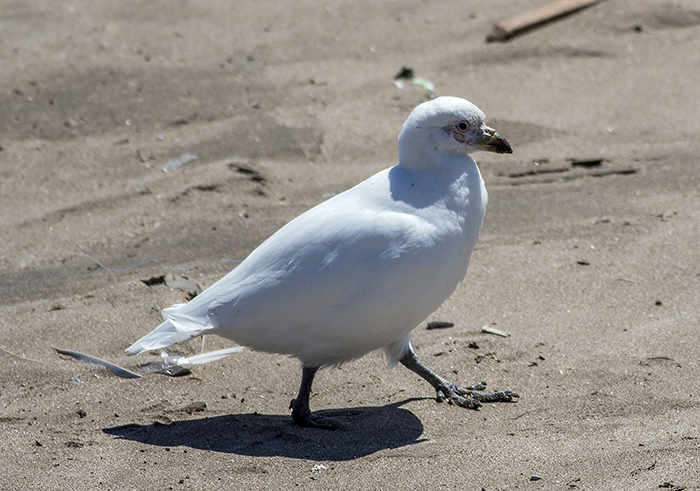
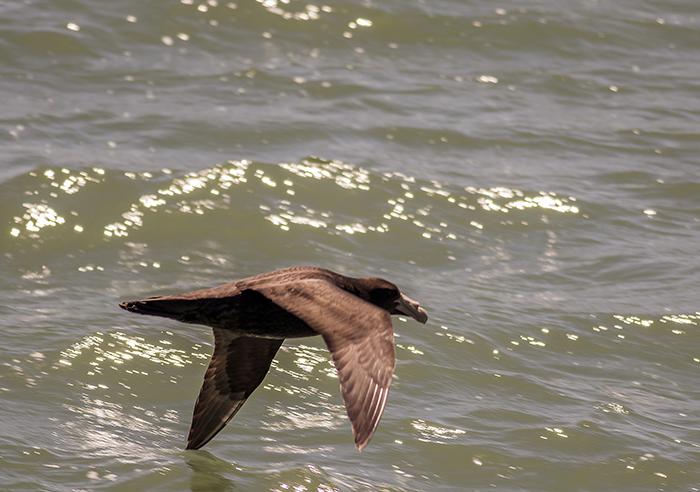
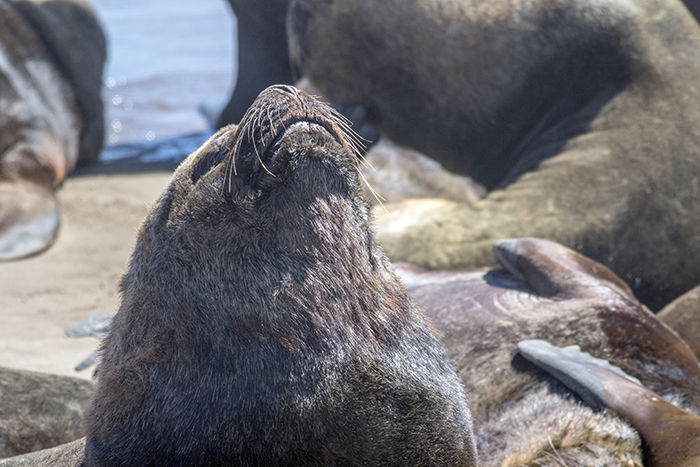
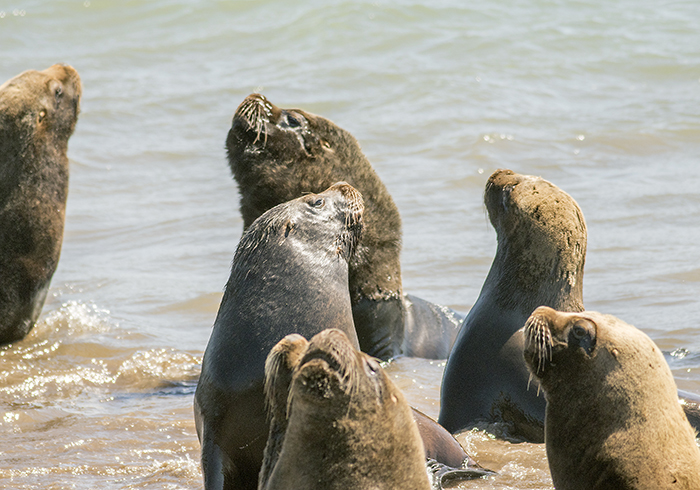
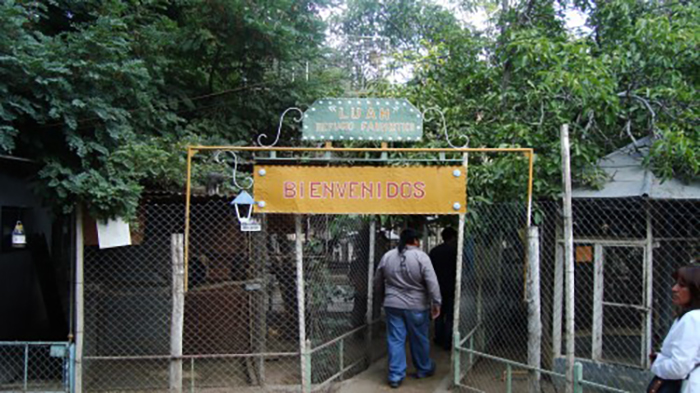 This place was started and run with the best of intentions as a rescue centre but over time funding for the basics (maintenance, food, animal care) has been much reduced and the place is a little run down. The people running it were very friendly and obviously caring insofar as resources permitted, but (one feels) way out of their depth in their efforts.
This place was started and run with the best of intentions as a rescue centre but over time funding for the basics (maintenance, food, animal care) has been much reduced and the place is a little run down. The people running it were very friendly and obviously caring insofar as resources permitted, but (one feels) way out of their depth in their efforts.